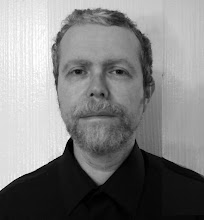We go now briefly from contemplating earthly matters to looking up at the sky and contemplating heavenly ones. Not perhaps the distant heavens but our nearby neighbor, the moon.
It is interesting to note that two Rishonim, R. Avraham Ibn Ezra and R. Levi Ben Gershon, the Ralbag both have lunar craters named after them.

The Rabbi Levi Crater can be seen here, the result of an impact crater by a heavenly body whose brilliant impact produced a crater marking the surface of the moon for longer than human memory endures.
Beyond being a brilliant scholar and innovative philosopher, the Ralbag or "Gersonides" was an astronomer responsible for inventing the Jacob's Staff, a tool used for centuries by sailing ships to navigate by the stars.

The Ibn Ezra or Abenezra Crater is named after R. Avraham Ibn Ezra. A restless soul, R. Ibn Ezra departed his birthplace in Muslim ruled Spain to travel the world from Africa to Egypt to London and France and Israel of course. A scholar, poet and philologist, R. Avraham Ibn Ezra's commentary on the Torah remains read to the present day. In addition he wrote extensively on Hebrew grammar, medicine, chess, mathematics and astronomy.

And then there was R. Avraham Zacuto, Rabbi, Mathematician, Historian, Professor and Royal Astronomer to the Court of Portugal. He perfected the astrolabe and promoted the search for a new route to India, a search that would eventually lead to Columbus' discovery of America. He prepared Columbus' and Vasco DeGama's crews and provided them with new astronomical navigation tables.
"The story is that on one of his voyages, when attacked by the natives, Columbus noted that Zacuto had predicted an eclipse for that day, and used this information to threaten the natives and convince them that he could extinguish the Sun and Moon and deprive them of all light. Zacuto's work thus saved the Admiral's life and that of his crew."
The Zagut crater on the moon, named after Rabbi Zacuto, is located to the northeast of the Rabbi Levi crater.

The Messala crater is named after Menashe Ibn Athari or Masha'allah ibn Atharī, a Jewish astronomer in Iraq in the 8th century. Today the Racah crater is named after the Israel physicist, Gulio Racah, who escaped fascist Italy for Israel while still under British rule and became a professor of theoretical physics at Hebrew University. While there he joined the Haganah and later was appointed deputy commander of the Haganah at Mount Scopus protecting the small Jewish presence there, including his own Hebrew University.
And now even after all these men are dead, when the light of the sun catches the surface of the moon at the right angle, the impacts they have made continue to shine on us, on earth.

It is interesting to note that two Rishonim, R. Avraham Ibn Ezra and R. Levi Ben Gershon, the Ralbag both have lunar craters named after them.
The Rabbi Levi Crater can be seen here, the result of an impact crater by a heavenly body whose brilliant impact produced a crater marking the surface of the moon for longer than human memory endures.
Beyond being a brilliant scholar and innovative philosopher, the Ralbag or "Gersonides" was an astronomer responsible for inventing the Jacob's Staff, a tool used for centuries by sailing ships to navigate by the stars.
In the dead of night I spread it out like a tent
And a thousand stars pierce it with their gleams.
Sitting inside, I see the moon and the Pleiades
And on a good night, the great Orion himself
R. Avraham Ibn Ezra
The Ibn Ezra or Abenezra Crater is named after R. Avraham Ibn Ezra. A restless soul, R. Ibn Ezra departed his birthplace in Muslim ruled Spain to travel the world from Africa to Egypt to London and France and Israel of course. A scholar, poet and philologist, R. Avraham Ibn Ezra's commentary on the Torah remains read to the present day. In addition he wrote extensively on Hebrew grammar, medicine, chess, mathematics and astronomy.
And then there was R. Avraham Zacuto, Rabbi, Mathematician, Historian, Professor and Royal Astronomer to the Court of Portugal. He perfected the astrolabe and promoted the search for a new route to India, a search that would eventually lead to Columbus' discovery of America. He prepared Columbus' and Vasco DeGama's crews and provided them with new astronomical navigation tables.
"The story is that on one of his voyages, when attacked by the natives, Columbus noted that Zacuto had predicted an eclipse for that day, and used this information to threaten the natives and convince them that he could extinguish the Sun and Moon and deprive them of all light. Zacuto's work thus saved the Admiral's life and that of his crew."
The Zagut crater on the moon, named after Rabbi Zacuto, is located to the northeast of the Rabbi Levi crater.
The Messala crater is named after Menashe Ibn Athari or Masha'allah ibn Atharī, a Jewish astronomer in Iraq in the 8th century. Today the Racah crater is named after the Israel physicist, Gulio Racah, who escaped fascist Italy for Israel while still under British rule and became a professor of theoretical physics at Hebrew University. While there he joined the Haganah and later was appointed deputy commander of the Haganah at Mount Scopus protecting the small Jewish presence there, including his own Hebrew University.
And now even after all these men are dead, when the light of the sun catches the surface of the moon at the right angle, the impacts they have made continue to shine on us, on earth.






Comments
The wisdom of Sefardim does my heart good.
ReplyDelete:D
Nice post
todah :)
ReplyDeletegmar hatima tova my friend...to you and everyone you love...a sweet new year...stay safe...love, marallyn
ReplyDeleteI love this post !
ReplyDeletePost a Comment